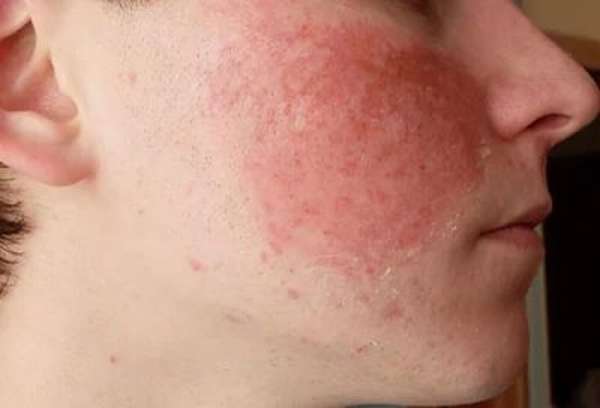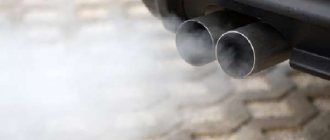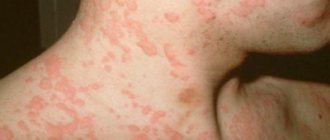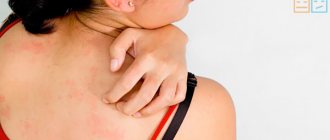Why can peeling be dangerous?
Skin peeling carried out using chemicals has a number of side effects, such as complications. The most dangerous to health is an allergy to peeling in response to the substances used in this procedure. This is a rather rare complication that, however, requires attention from a cosmetologist-dermatologist and immediate treatment.
Complications that arose during the post-peeling period
These complications can occur both immediately and some time after peeling. They differ from ordinary side effects in that they have an extremely negative impact on the aesthetic result, and in some cases even pose a health threat and require urgent medical intervention.
Complications are as follows:
- allergic reaction;
- persistent erythema;
- marbling of the skin;
- hyperpigmentation;
- exacerbation of acne;
- demarcation line;
- hypertrophic and keloid scars;
- fibrosis of the dermis;
- formation of atheromas (sebaceous gland cysts).
To avoid a slow or immediate allergic reaction, a cosmetologist should prescribe skin tests before the procedure. Sometimes the patient himself does not know that he is allergic to any substance, and this is fraught with serious consequences in the form of anaphylactic shock.
Hypertrophic and keloid scars are treated with combined methods - surgery, cryotherapy, steroid drugs, laser resurfacing, etc.
A complication such as marbling of the skin occurs due to the death of specialized cells called melanocytes, which are responsible for the production of melanin in the body. This problem occurs most often in women with dark skin. But the problem is that this defect cannot be corrected; you can only slightly even out the tone with the help of additional superficial peels.
Hyperpigmentation is persistent dark coloration of the skin. In some cases, pigmentation is long-lasting and persistent, but this is not always a complication after peeling. Sometimes adult skin reacts this way, and this is most often associated with the individual characteristics of the body or with hormonal imbalance.
Strange as it may seem, such an unpleasant skin defect as acne, which is successfully eliminated by peeling, in some cases may intensify after the procedure. And the reason for this, first of all, is the inflammatory process, which encourages the sebocyte cells responsible for the formation of sebum to work actively.
The demarcation line is a very unpleasant complication. This line clearly delineates the treated and untouched areas of the skin. This happens mainly in patients with porous and dark skin. This defect can only be removed with the help of additional gentle peeling.
The appearance of keloid and hypertrophic scars is the most serious and difficult to correct complication after exfoliation. Scars appear as a result of violations of peeling technology, when combining deep peeling and other cosmetic procedures, with a tendency for fibrous connective tissue to grow, as well as when forcibly removing crusts in the post-peeling period.
1. Formation of blisters filled with serous fluid 2. Prolonged redness and swelling of the tissues of the periorbital area
Skin fibrosis occurs when the basement membrane is destroyed during the peeling process. At the same time, the texture of the skin changes, and instead of fine and shallow wrinkles, deep and rough furrows form.
A sebaceous gland cyst (atheroma) appears as a result of mechanical disruption of the sebaceous gland ducts after deep peeling. As a result, the outlet becomes smaller and the outflow of sebum slows down. Atheromas can only be removed surgically, with the removal of the sebaceous capsule.
As a result of the removal of the upper protective layer of the epithelium, the skin becomes very vulnerable. After all, in fact, one layer of skin was removed. For this reason, you need to take care of her during this period with a double layer, following all the recommendations and prescriptions of the cosmetologist. Also, the range of post-peeling procedures depends on the depth of damage to the skin. What does it mean?
- With superficial peeling within the stratum corneum, no special care is required. You can continue traditional skin care using sunscreen and restorative products;
- for medium peeling without damaging the basement membrane, use broad-spectrum sunscreens with a high SPF (sun protection factor). Sunscreens should contain both physical and chemical filters, as well as protection against both UVA and UVB rays. How do sunscreens work? They prevent the penetration of rays harmful to the skin, thereby blocking the synthesis of melanin and the formation of hyperpigmentation;
- with deep peeling, which damages the destruction of the basement membrane in addition to the above-mentioned actions, antiviral and antibacterial drugs, anti-inflammatory drugs and procedures are used to improve metabolic processes in the skin and stimulate its rapid regeneration.
If you decide to undergo peeling, you should be prepared for the fact that this procedure is not without consequences. You will have to adhere to certain lifestyle restrictions for some time. The recovery period varies in duration and severity of side effects, depending on this, be patient and strictly follow the instructions of the cosmetologist.
It is sometimes impossible to avoid complications and side effects due to the unpredictable behavior of the body when its clear and coordinated work is interfered with.
Therefore, choose a clinic carefully, and most importantly, make sure that you can completely trust the professional level of your cosmetologist. Beauty, of course, requires sacrifice, but it would be unforgivable if it were human.
Causes of allergies
The active peeling chemical may be:
- pyruvate, lactate, gluconate;
- carboxylic acids (eg trichloroacetic acid);
- retinol (a preparation based on plant extract);
- phenol (used for deep peeling);
- salicylic acid, etc.
It is important to understand that depending on the physiological and genetic characteristics of each person, an allergic reaction can develop in response to any agent used. Also, it should be noted that allergies to chemical peeling occur much more often than to mechanical peeling, and the deeper the penetration of the active substance, the greater the risk of complications.
An allergy to retinol peeling develops due to the presence of sensitization (hypersensitivity) to the peeling components and consists of an inadequate reaction of the body to the penetration of these components into the skin. There is an active release of a large amount of histamine from the cells, which leads to the expansion of capillaries and the occurrence of tissue edema.
In addition to a direct reaction to the active substance, skin hypersensitivity may be associated with a general increase in the sensitivity of the affected areas of the skin to mechanical, temperature and other types of influences.
What are the dangers of the procedure?
It is also important to understand that an allergy to this session is a non-standard and even sometimes aggressive response of any living organism to certain substances of artificial origin. Irritants enter you through the top layer of the epidermis or through the mucous membranes.

Depending on the mechanism and substances used in such a session, they are divided into:
Depending on the depth of the impact of such a process, it is divided into superficial, middle and deep types. Unfortunately, in our time, allergies to peeling are quite common; this occurs through a negative reaction of our body to the means used to perform such a session.
Symptoms of allergy to peeling
Typically, an allergy to peeling is manifested by local symptoms, the boundaries of which, however, are not limited to the peeling area and may extend beyond it. As a rule, allergic reactions occur immediately after the procedure.
Signs of an onset allergy are:
- Rapid onset of skin swelling (within the next few hours after the procedure);
- Redness of the skin;
- Painful sensations may occur;
- Severe itching and burning sensation.
Side effects after exfoliation
Peeling is the basis of the peeling mechanism as such. It is a common consequence and goes away within 1-3 days. However, after using trichloroacetic acid or resorcinol, large scaly peeling may occur and persist for a week or longer.
- moderate hyperemia;
- erythema (severe redness of the skin);
- peeling of the skin;
- swelling;
- crust formation.
Skin hyperemia is a normal skin reaction to chemical agents. It occurs due to damage to the skin, and its intensity depends on the degree of aggressiveness of the chemical.
Peeling of the skin after the procedure also depends on the degree of aggressiveness of the chemical, the technology used and timely rehabilitation. For example, after superficial peeling, peeling is almost unnoticeable, after medium peeling, peeling is observed with the formation of thin brown crusts, and after strong peeling, peeling is widespread and pronounced with the formation of deep crusts. In different areas of the skin, peeling has different intensity, which is associated with the thickness of the epidermis and the number of sebaceous glands.
Hyperpigmentation occurs when there is an inadequate cellular response and excessive melanin production by cells, resulting in dark areas. This most often occurs after treatment with trichloroacetic acid or exposure to a laser beam.
Edema is a peculiar reaction of the skin to external irritants. After peeling, the permeability of the capillaries increases, fluid leaves them and accumulates in the tissues, thereby causing swelling.
What to do if you are allergic to peeling?
It is advisable, instead of treating allergic complications, to prevent them. As a rule, in order to avoid the development of allergies, before the procedure it is possible to do a test for individual sensitivity and tolerance to the chemical substance used in peeling. This will reduce the risk of this complication and will also help avoid exposure to allergens (individual for each person) during recovery after the procedure.
Peeling with lactic acid at home
You can do milk peeling yourself at home. It won't take much time or effort. Let's take a closer look at the step-by-step instructions:
- Preparatory period 2 weeks. At this time, moisturizing creams and masks are applied to the skin daily to strengthen the facial tissue as much as possible.
- For the procedure, you need to prepare: a solution of lactic acid (30-40%), medical alcohol and cosmetic discs.
- Wash your face with regular soap, or baby soap.
- The face is degreased with medical alcohol.
- The cosmetic disc is moistened in lactic acid and applied evenly to the skin, avoiding delicate areas near the eyes and lips. Leave for 5-15 minutes. The first time it is recommended to keep it for no more than 5 minutes, and gradually increase the time with each procedure to check the skin reaction and avoid negative consequences.
- The face is thoroughly washed with clean cold water.
- Apply a soothing cream.
It is important to know! If any unpleasant sensations appear, it is better to wash off the product immediately. Next time, reduce the concentration of the lactic acid solution.
Milk peeling is an affordable and effective means for cleansing the face, which is practically harmless to skin health. You can use the services of a beauty salon or do the procedure yourself. The result is noticeable from the first use, and the effect lasts for several weeks.
Popular allergy medications
- As a rule, the doctor prescribes antihistamines (H1 histamine receptor blockers), for example cetirizine, diphenhydramine, suprastin, loratadine and others. They can be prescribed either orally (orally) in the form of tablets, or intramuscularly or intravenously (parenterally). It is also possible to use them locally in the form of ointments or creams applied to the affected skin.
- In cases of ineffectiveness of antihistamines, the use of glucocorticosteroids (cortisone, hydrocortisone), both locally and systemically (in cases of severe and rapidly progressing allergies) is indicated.
With timely treatment, allergy symptoms usually subside quickly.
Milk peeling - is there a risk of allergies?
Lactic peeling is a peeling procedure with lactic acid.
It belongs to the category of superficial peelings and can be used even for very sensitive skin. The basis for the effectiveness of milk peeling is the beneficial properties of milk for both food and cosmetic purposes. In Ancient Egypt, there was a known recipe for “Cleopatra’s bath” - a milk bath that had anti-aging properties, rejuvenated the body and face, and whitened the skin. Currently, the use of milk as a cosmetic product does not lose popularity. Milk peeling is an excellent alternative if there are contraindications to glycolic acid, which is often used for gentle and effective peeling.
Indications for milk peeling are:
- acne;
- skin unevenness, inflammation and redness;
- skin stretch marks;
- excessive oily skin;
- hyperpigmentation;
- hypersensitive skin prone to allergies;
- the presence of fine and deep wrinkles;
- loss of overall tone, skin elasticity, unhealthy complexion, sagging.
Milk peelingPeeling: how to refresh the skin is used as an addition to programs for correcting age-related skin changes. Its undeniable advantage is its high efficiency for serious changes in the epidermis with hypersensitive skin.
Peeling with lactic acid is ideal as a so-called starting procedure when it is necessary to prepare the skin for professional care and correction of deep changes. Lactic acid, working effectively and at the same time delicately, launches active metabolic processes in the skin, normalizes local metabolism, preparing the skin for other procedures.
Lactic acid is a natural component that is always present in the stratum corneum of the epidermis, so a procedure such as peeling with its content, in addition to the targeted elimination of cosmetic problems, also perfectly moisturizes the skin, preserving its natural hydrobalance.
Action of lactic acid
The advantage of milk peeling is that the effect of lactic acid is very close to the effect that other types of superficial peeling have, but the risk of allergies and excessive redness of the skin during the procedure is eliminated and it is possible to treat very sensitive skin with severe problems without aggravating its condition.
Penetrating into the epidermis, lactic acid begins its active, but at the same time gentle work: eliminates keratinized particles from the surface of the skin, relieves general and local inflammation, evens out the relief, eliminates redness and brightens areas of hyperpigmentation, stimulates cell renewal, triggers collagen synthesisCollagen: types and functions . Without drying out the skin, lactic acid restores its protective function, increases hydration and helps resist harmful environmental influences. The non-aggressive properties of lactic acid help provide a sebostatic effect. This means that milk peeling solves the problem of both dry, dehydrated and oily problem skin, maintaining an optimal moisture balance in it.
To completely restore the skin through milk peeling, a course of 3 to 6 procedures is required with a break of 10-14 days. During the course of treatment, it is important to protect your face from ultraviolet radiation.
Lactic acid in a very small proportion is included in cosmetics for home use, as well as peelings that you can do yourself. For cosmetics (tonics, lotions, maxi-peelings), 0.1-0.5% lactic acid is sufficient; for home peeling products, a maximum of 4% lactic acid is used. In peeling salons, lactic acid is used with an intensity of 30% to 90%. Lactic acid 10-15% is included in the peeling mixture along with other acids as an emollient.
There are much fewer contraindications to milk peeling than to other types of similar treatments. It should not be done in case of an acute stage of herpes, or immediately after hair removal. Epilation: the many-sided struggle for smooth skin. If there are deep changes in the skin, acute inflammatory diseases, the cosmetologist may recommend abandoning it.
Enzyme peeling: beauty and health of delicate skin
Facial peeling is a clean job
Glycolic peeling: the main thing is to prepare properly
Acid peeling - solves skin problems
Article tags:
- peeling
|
|
Features of the procedure
If phenol peeling can be done only once in a lifetime, then lactic acid peeling can be repeated several times a year.
Any cosmetic manipulation gives the best result if it is carried out in courses rather than once. And milk peeling is no exception. One course can consist of 3 to 6 sessions. The pause between them should be at least 10-14 days.
The procedure itself consists of several stages:
1. First of all, you need to remove makeup and cleanse the skin of impurities. For this purpose, appropriate cosmetic compositions are used.
2. Now you need to apply the peeling agent.
3. As a finishing touch, a solution is applied that promotes the speedy restoration of the skin.
One session usually lasts about 20-30 minutes.










